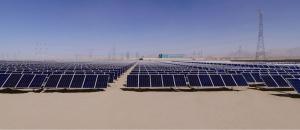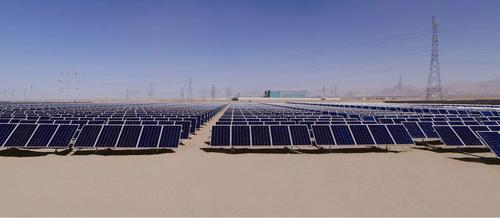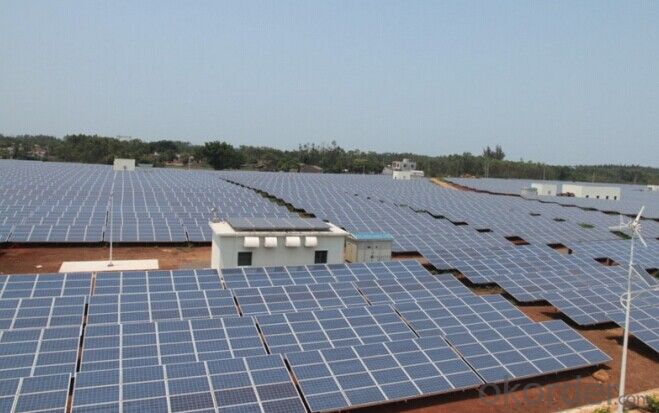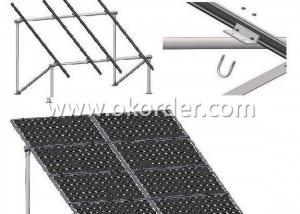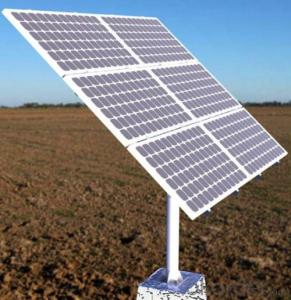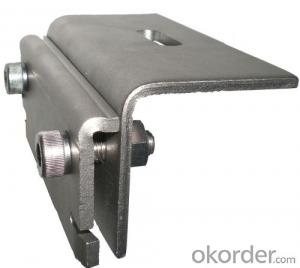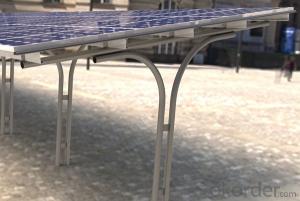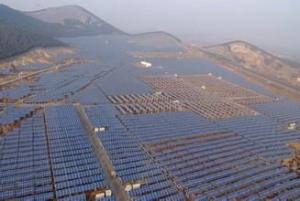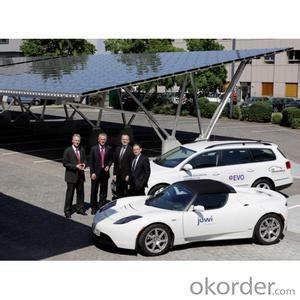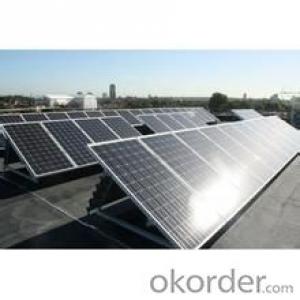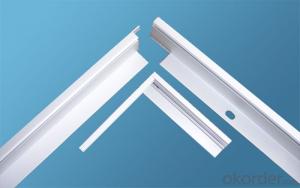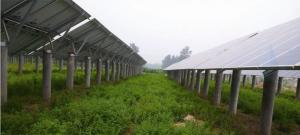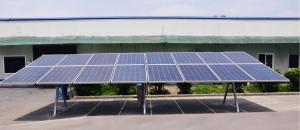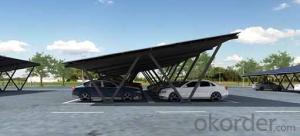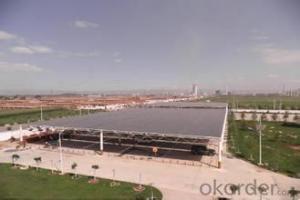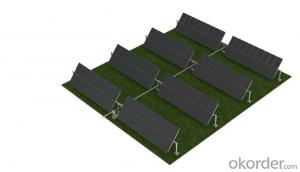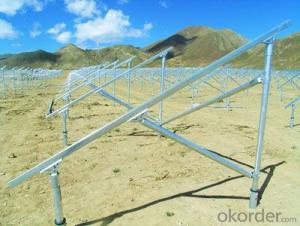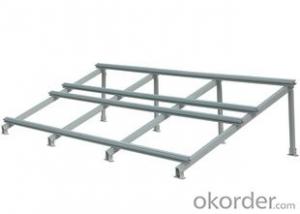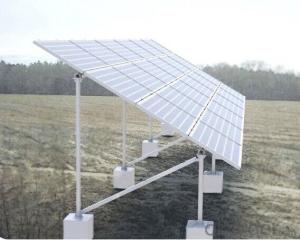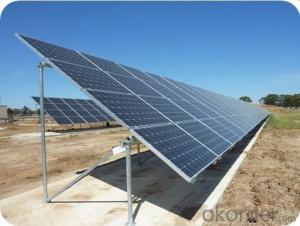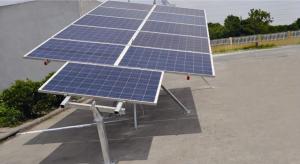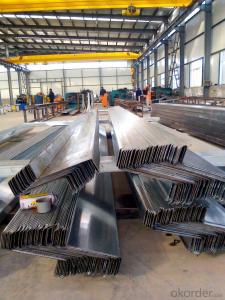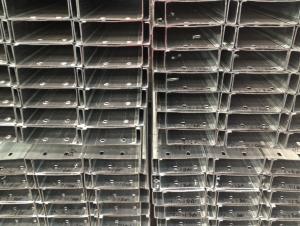Carport Solar Mounting System with Large Scale Ground Joint Horizontal Axis Tracking
- Loading Port:
- Shanghai
- Payment Terms:
- TT OR LC
- Min Order Qty:
- 500000 watt
- Supply Capability:
- 5000000 watt/month
OKorder Service Pledge
OKorder Financial Service
You Might Also Like
Large scale ground joint horizontal axis tracking system
Tracking system used in solar plant
Performance Feature:
single set horizontal axis tracking system is that:
1. the advantage conpared with the fixed mounting system.cover the same area as the fixed mounting system.
2. power generating can be increased by 10-30%.the foundation scale is the same as the fixed mounting system.
3. the comprehensive costs are much lower than the fixed mounting system.
4. suitable fooe the min-low latitude areas and comples terrain.
5. the large gronud area ,color steel tile roof and etc.
6. thefirst input only need 2 years to recover costs,and the investors will receive10-30% annual generating incomes more than 20 years.
•installed capacity | • 1KW—10KW |
•control method | •Light control •time control •light/time control |
•tracking accurancy | • ≤1° |
•Azimuth angle | • ±45° |
•Working wind | • 50—70km/h |
•Max wind resistance | • 125—200km/h |
•Driven power | • DC24V/≤30W |
•Structural material | • Q 2 3 5 •hot-dip galvanized steel |
•level of protection | • IP65 |
•Quality guarantee | • 25Y/2Y |
•Operating ambient temperature | • -35℃—65℃ |
•Area of net rack | • 10㎡—80㎡ |
•Unit weight | • 200kg——2000kg |
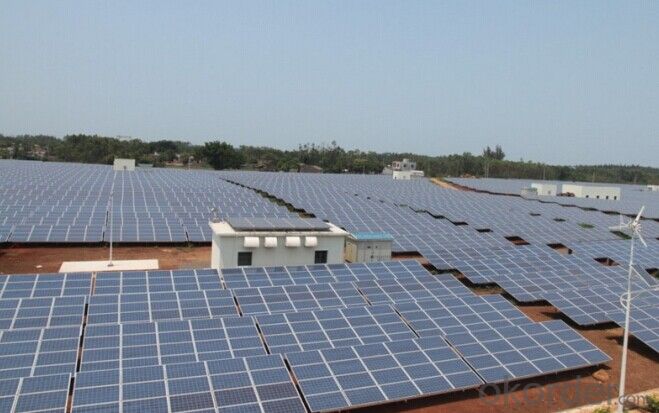
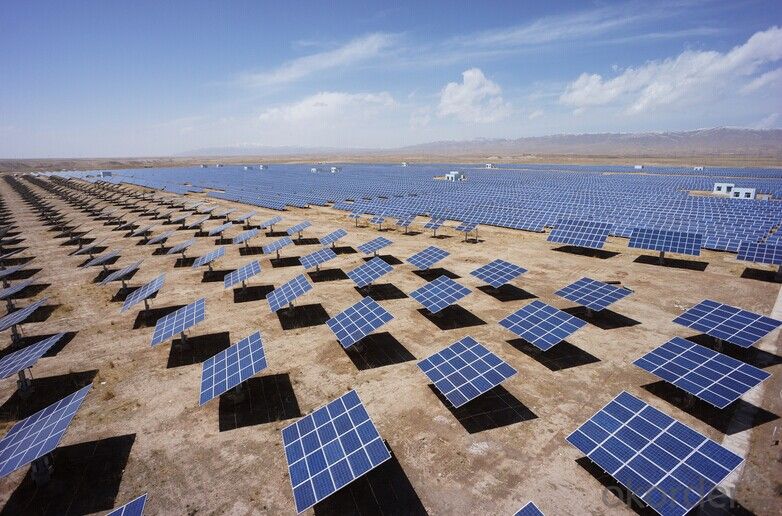
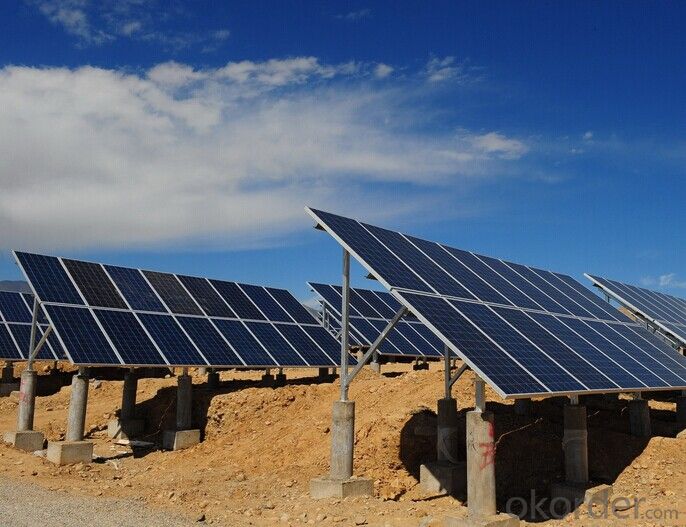
- Q: Can a solar mounting system be used in areas with frequent power outages?
- Yes, a solar mounting system can be used in areas with frequent power outages. Solar panels generate electricity by harnessing sunlight, and they can continue to produce power even when the grid goes down. However, to ensure uninterrupted power supply during outages, an appropriate backup system such as battery storage or a generator may be required to store and provide electricity when sunlight is not available.
- Q: Can solar mounting systems be installed on buildings with architectural features or historical significance?
- Yes, solar mounting systems can be installed on buildings with architectural features or historical significance. However, it is important to ensure that the installation process is done in a way that preserves the integrity and aesthetics of the structure. This may involve careful planning, coordination with architects and preservation experts, and the use of specially designed mounting systems that are discreet and blend in with the building's design.
- Q: What are the benefits of using a solar mounting system?
- The benefits of using a solar mounting system include increased efficiency in harnessing solar energy, improved safety and durability of solar panels, flexibility in installation options, and potential cost savings in the long run due to reduced maintenance and increased energy production.
- Q: How are solar panels attached to a mounting system?
- Solar panels are typically attached to a mounting system using specialized brackets or clamps. These brackets or clamps are securely fastened to the frame of the solar panel and then attached to the mounting system, which could be a roof, ground, or pole mount. The process ensures a stable and secure installation, allowing the solar panels to capture maximum sunlight and generate electricity efficiently.
- Q: What is the expected increase in self-consumption with a solar mounting system?
- The expected increase in self-consumption with a solar mounting system can vary depending on various factors such as the size of the system, the amount of sunlight available in the area, the energy consumption patterns of the household or business, and the efficiency of the system. However, generally speaking, a well-designed solar mounting system can significantly increase self-consumption by allowing for the direct use of solar energy generated on-site, reducing the reliance on grid electricity and maximizing the benefits of solar power.
- Q: Are there any maintenance requirements for solar mounting systems?
- Yes, solar mounting systems require regular maintenance to ensure their optimal performance and longevity. This typically involves inspecting the system for any damage or loose components, cleaning the panels and racking to remove dirt and debris, and checking the system's alignment and stability. Additionally, it is important to monitor the system's electrical connections and wiring to identify any potential issues. Regular maintenance helps prevent efficiency losses and ensures the system operates effectively over its lifespan.
- Q: Can a solar mounting system be installed on a religious or worship center?
- Yes, a solar mounting system can be installed on a religious or worship center. Many religious institutions are embracing renewable energy solutions, including solar power, as a way to reduce their carbon footprint and promote sustainability. Installing solar panels on religious or worship centers not only helps them save on energy costs but also serves as a symbol of their commitment to environmental stewardship.
- Q: Can a solar mounting system be installed on uneven terrain?
- Yes, a solar mounting system can be installed on uneven terrain. There are various types of solar mounting systems available, such as adjustable tilt systems or ballasted systems, which are designed to accommodate uneven ground conditions and provide stability for solar panels. These systems can be adjusted or engineered to fit the specific terrain, allowing for efficient and secure installation of solar panels even on uneven surfaces.
- Q: Are there any aesthetic considerations when choosing a solar mounting system?
- Yes, there are aesthetic considerations when choosing a solar mounting system. The system should blend seamlessly with the existing architecture and not be visually obtrusive. Factors such as color, design, and placement should be taken into account to ensure a visually appealing installation.
- Q: What are the foundation requirements for a solar mounting system?
- The foundation requirements for a solar mounting system typically include factors such as the soil type and stability, the weight and size of the solar panels, the local climate conditions, and the specific design and manufacturer recommendations. These requirements are crucial to ensure the stability, durability, and performance of the solar mounting system over its lifetime.
Send your message to us
Carport Solar Mounting System with Large Scale Ground Joint Horizontal Axis Tracking
- Loading Port:
- Shanghai
- Payment Terms:
- TT OR LC
- Min Order Qty:
- 500000 watt
- Supply Capability:
- 5000000 watt/month
OKorder Service Pledge
OKorder Financial Service
Similar products
Hot products
Hot Searches
Related keywords
